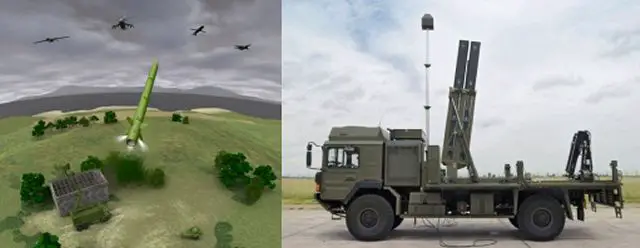| a | |||
Defence & Security Industry News - MBDA & Avibras |
|||
| Thursday, November 20, 2014 10:53 AM | |||
| MBDA and Avibras to jointly develop local variant of the Common Anti-Air Modular Missile system | |||
The
European company MBDA and the Brazilian company Avibras showcased for
the first time to the Brazilian authorities a joint project for the development
of a local variant of the MBDA's Common Anti-Air Modular Missile system
(CAMM) for the Armed Forces of Brazil.
|
|||
 MBDA's Common
Anti-Air Modular Missile system (CAMM)
MBDA's Common
Anti-Air Modular Missile system (CAMM) |
|||
Both
companies participated in October at the Seminar on Protection of Major
Events organized by the Brazilian Army in Brasilia, where they presented
this system. The concept presented involves the development of a Brazilian
rocket from this CAMM
system, initially known as AV-MMA, and use technologies orginally developed
for the Astros 2020, one of the most successful Avibras product. Nearly
70 percent of the project will be locally content.
The CAMM is a MBDA's new generation air defense missile which, according to its developers, provides complete protection against known or anticipated air threats. It is called modular because of the possibility of using the same system by three forces -Land, Air and Navy-, reducing development costs, maintenance and logistical support. According to Ricardo Mantovani, MBDA's regional sales executive, "This is a new action to strengthen the defense industry in Brazil that promotes MBDA in collaboration with Avibras, thanks to which we can offer the development of domestic technologies issued from high-tech systems". The CAMM has already been acquired by the UK's Royal Navy and the Royal Navy of New Zealand and is currently under evaluation by other countries also for marine use . Land and air versions are estimated to be available by 2016. |
|||
MBDA and Avibras to jointly develop local variant of the Common Anti-Air Modular Missile system
- Posted On














